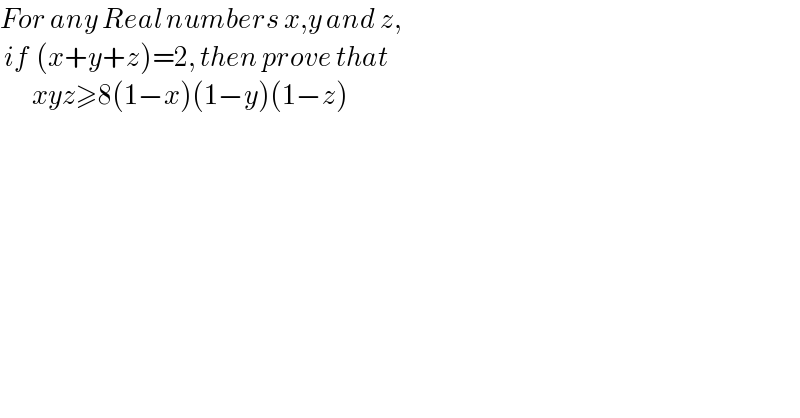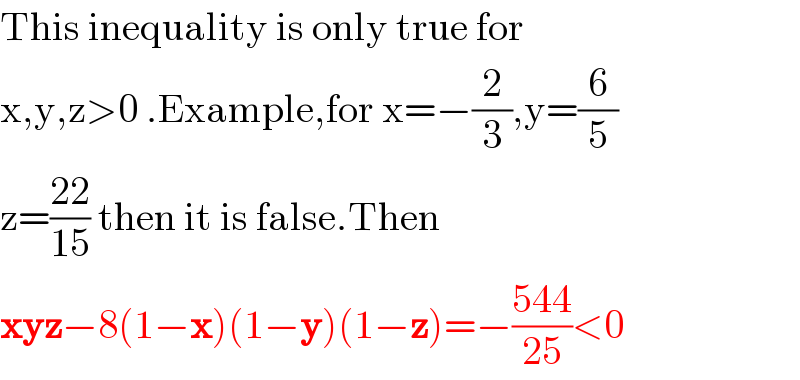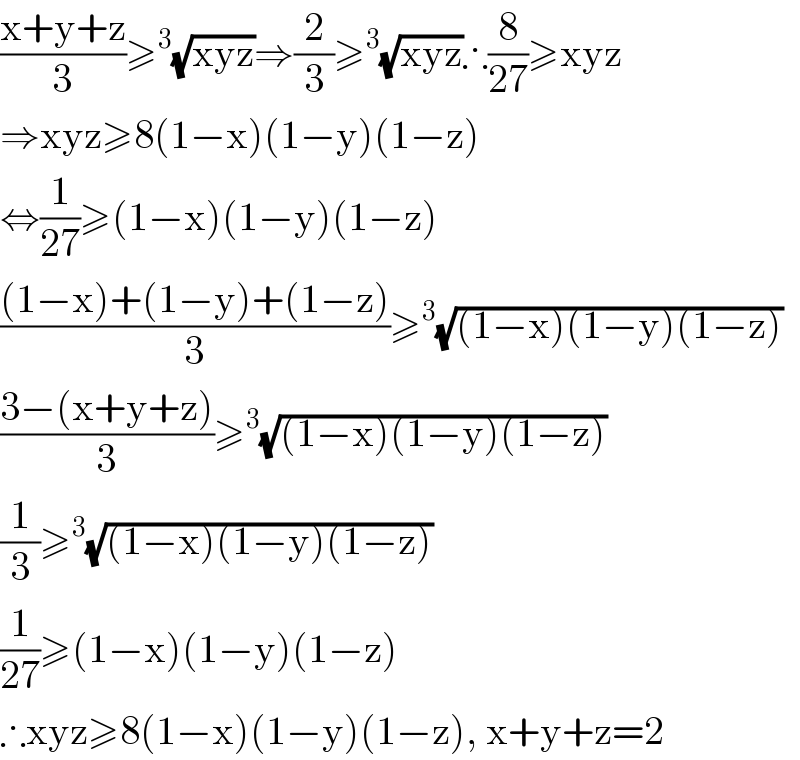
Question and Answers Forum
Question Number 109595 by nimnim last updated on 24/Aug/20

Commented by 1549442205PVT last updated on 25/Aug/20

Answered by floor(10²Eta[1]) last updated on 24/Aug/20

Commented by nimnim last updated on 24/Aug/20

Commented by floor(10²Eta[1]) last updated on 25/Aug/20

